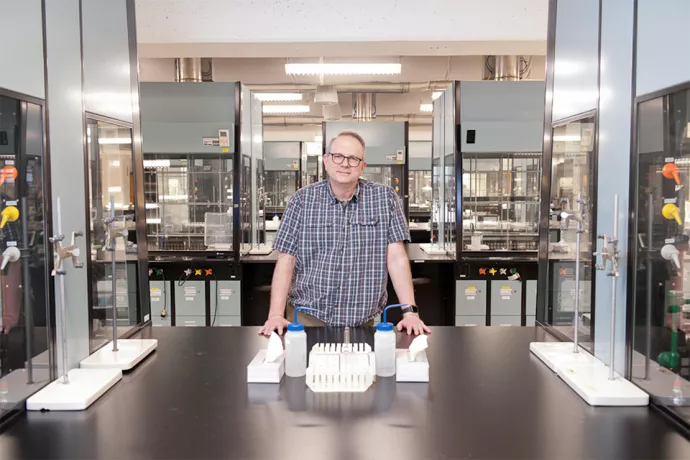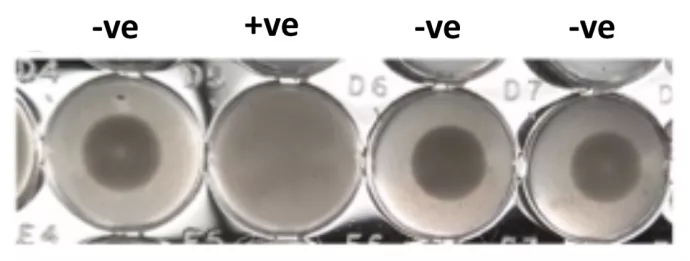
UTM researcher developing low-cost COVID-19 antibody detection test using yeast
A U of T Mississauga researcher has received funding to develop an inexpensive, easy-to-use COVID-19 antibody detection test for low- and middle-income countries.
The field test kits could be used for long-term disease monitoring and provide information critical for creating effective public health strategies, says David McMillen, an associate professor with UTM’s Department of Chemical and Physical Sciences.
“As we move past the current acute phase of the pandemic, surveillance will become increasingly important to enable our health-care infrastructure to anticipate and prepare for new outbreaks,” he says.
McMillen says the test could be made cheaply using engineered yeast cells. This is especially important for countries with limited means that need to decide where to dedicate their public health resources. For them, the cost of current testing is insurmountable.
McMillen’s team has already used engineered yeast cells to detect antibodies for Chagas’ disease and dengue fever in previous research projects. The team was in the process of collaborating with researchers from the University of the Philippines to create a similar malaria antibody detection test when the lockdown closed the lab.
Then the opportunity for COVID-specific funding arose. McMillen says he decided to use the same approach to detect antibodies for SARS-Cov-2, the virus responsible for COVID-19. Work on the malaria test continues, so this new project will run in parallel with existing research, in partnership with the University of the Philippines.
“This test could potentially be made very cheaply,” McMillen says, explaining yeast is inexpensive to grow and doesn’t require sophisticated methods. It can grow in big vats with just water and sugar.
He estimates the raw materials for 5000 kits would cost a dollar. A fully assembled kit would cost more, but there’s not a “whole lot extra to add, which is why it’s appealing,” McMillen says.
Unlike most available tests, the yeast could be shipped dry and wouldn’t need to be continuously refrigerated, making it more accessible to areas with limited access to electricity, especially rural communities. McMillen would like the test to be usable without relying on electricity. The yeast cells do need to be put in a centrifuge, so McMillen has been testing non-electrical alternatives. Preliminary results suggest salad spinners might work.
Aside from centrifugal force, the test doesn’t require expensive lab equipment, technical expertise by the user or specialized materials. Everything needed could be sourced locally, says McMillen. Testing wouldn’t rely on the global supply chain, which could become strained as the crisis in testing continues.

The blood sample would be mixed with the engineered yeast and, depending on the presence of antibodies, the cells would produce a visible reaction. McMillen explains if antibodies are present, the yeast would look like a flat, gray sheet, while a negative result would produce a dot or button-like shape at the bottom of the round-bottomed well. This would provide a visual yes/no result in about 1.5 hours, he says.
McMillan notes the yeast-based kits would be unable to compete with existing tests in terms of sensitivity, but they could compete when it comes to cost.
“I think it will be good enough,” he says.
With the scaffolding for his research already in place, McMillan anticipates having a new COVID-19 version up and running within the first few months of this one-year funded project. He will then move to the testing phase and work toward developing a prototype, collaborating with the university in Manila to ensure he hasn’t misunderstood the environment where the tests will be used.
From there, he will create a user-friendly kit, complete with comprehensible instructions, that is suited to the conditions, requirements and constraints of developing countries.
